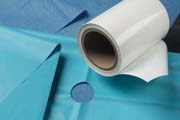
These and other trends are presented in Medical & Dental Adhesives & Sealants, a new study from The Freedonia Group Inc., a Cleveland-based industrial market research firm.

Dental applications are expected to achieve mixed results through 2009, with good opportunities linked to sealants and certain adhesives. For example, pit and fissure sealants will register strong gains due to their use in the prevention of cavities. In addition, bonding agents used in cosmetic dental procedures, such as braces, will continue to provide steady gains. However, the incidence of cavities and need for root canals is expected to continue to drop, and individuals will likely keep their natural teeth longer. As a result, products such as denture bonding agents, restorative adhesives and cements will achieve limited gains through 2009.
For more information, contact Corinne Gangloff, The Freedonia Group Inc., 767 Beta Drive, Cleveland, OH 44143--2326; phone (440) 684-9600; fax (440) 646-0484; e-mail pr@freedoniagroup.com; or visit www.freedoniagroup.com.